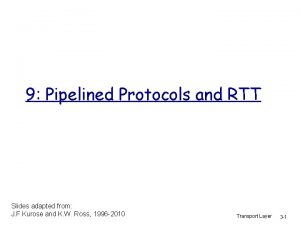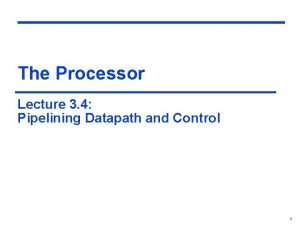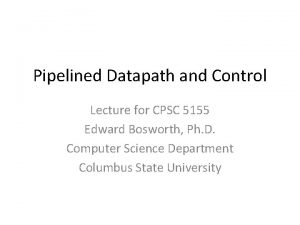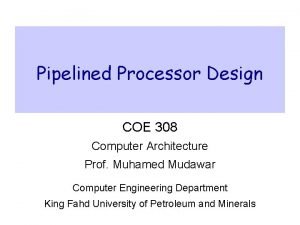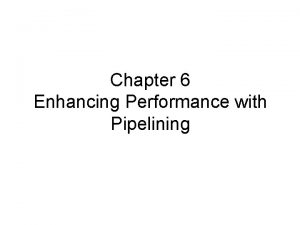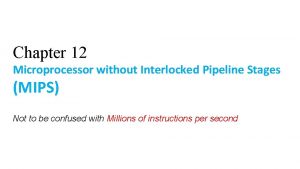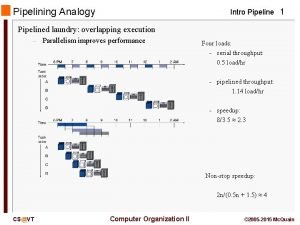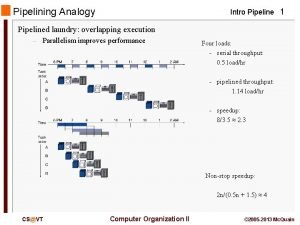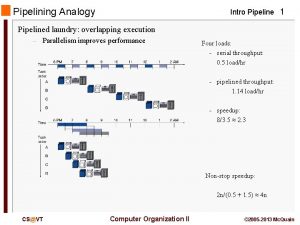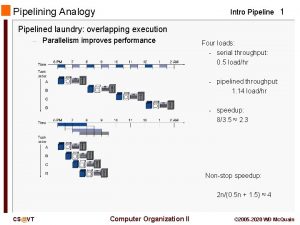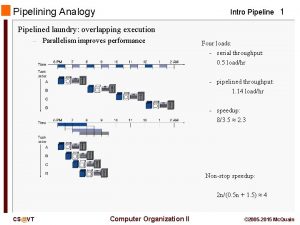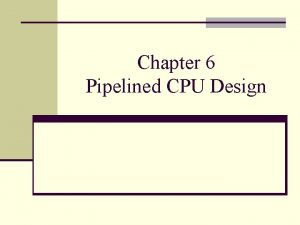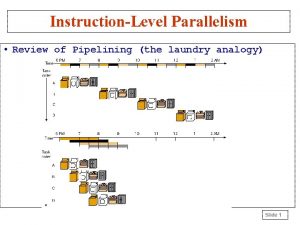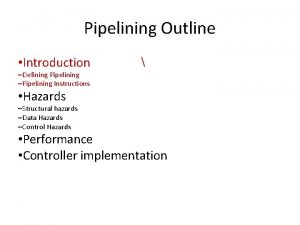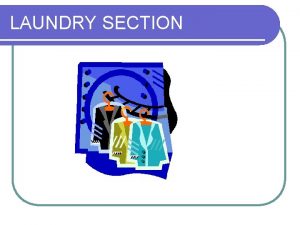Pipelining Analogy Intro Pipeline 1 Pipelined laundry overlapping











- Slides: 11

Pipelining Analogy Intro Pipeline 1 Pipelined laundry: overlapping execution – Parallelism improves performance Four loads: - serial throughput: 0. 5 load/hr - pipelined throughput: 1. 14 load/hr - speedup: 8/3. 5 ≈ 2. 3 Non-stop speedup: 2 n/(0. 5 n + 1. 5) ≈ 4 CS@VT Computer Organization II © 2005 -2015 Mc. Quain

Basic Idea Intro Pipeline 2 What if we think of the simple datapath as a linear sequence of stages? We have 5 stages, which will mean that on any given cycle up to 5 different instructions will be in various points of execution. Can we operate the stages independently, using an earlier one to begin the next instruction before the previous instruction has completed? CS@VT Computer Organization II © 2005 -2015 Mc. Quain

MIPS 5 -stage Pipeline Intro Pipeline 3 Stage Actions For IF Instruction fetch from memory all ID Instruction decode & register read decode for all; read for all but j EX Execute operation or calculate address all but j MEM Access memory operand lw, sw WB Write result back to register lw, R-type CS@VT Computer Organization II © 2005 -2015 Mc. Quain

Timing Assumptions Intro Pipeline 4 Assume time for stages is – – 100 ps for register read or write 200 ps for other stages Instruction fetch Register read ALU operation Memory access Register write Total time lw 200 ps 100 ps 800 ps sw 200 ps 100 ps 200 ps R-format 200 ps 100 ps 200 ps beq 200 ps 100 ps 200 ps ? ? j 700 ps 100 ps 600 ps 500 ps ? ? QTP: how does j fit in here? CS@VT Computer Organization II © 2005 -2015 Mc. Quain

Pipeline Timing Details Intro Pipeline 5 Each stage is allotted 200 ps, and so that is the cycle time. That leads to "gaps" in stages 2 and 5: We stipulate that register writes take place in the first half of a cycle and that register reads take place in the second half of a cycle. QTP: why? CS@VT Computer Organization II © 2005 -2015 Mc. Quain

Non-pipelined Performance Intro Pipeline 6 Single-cycle (Tc= 800 ps) Total time to execute 3 instructions would be 2400 ps. Total time to execute N instructions would be 800 N ps. CS@VT Computer Organization II © 2005 -2015 Mc. Quain

Pipelined Performance Intro Pipeline 7 Pipelined (Tc= 200 ps) Total time to execute these 3 instructions would be 1400 ps. Speedup would be 2400/1400 or about 1. 7. Total time to execute N (similar) instructions would be 800 + 200 N ps. Speedup would be 800 N/(800+200 N) or about 4 for large N. CS@VT Computer Organization II © 2005 -2015 Mc. Quain

Pipeline Speedup Intro Pipeline 8 If all stages are balanced (i. e. , all take the same time): If not balanced, speedup is less Speedup is due to increased throughput – – Latency (time for each instruction) does not decrease In fact… Note: the goal here is to improve overall performance, which is often not the same as optimizing the performance of any particular operation. CS@VT Computer Organization II © 2005 -2015 Mc. Quain

Pipelining and ISA Design Intro Pipeline 9 MIPS 32 ISA was designed for pipelining: 32 -bit machine instructions (uniformity) - easier to fetch and decode in one cycle - vs x 86: machine instructions vary from 1 to 17 bytes Few, regular instruction formats - can decode opcode and read registers in same clock cycle Load/store addressing - can calculate address in one pipeline stage… - … and access data memory in the next pipeline stage Alignment requirements for memory operands - 4 -byte accesses must be at “word” addresses - memory access takes only one clock cycle QTP: what if we had to support: add CS@VT Computer Organization II 4($t 0), 12($t 1), -8($t 2) © 2005 -2015 Mc. Quain

Issues Intro Pipeline 10 But… is there anything wrong with our thinking? CS@VT Computer Organization II © 2005 -2015 Mc. Quain

Issues Intro Pipeline 11 What about handling: beq $s 0, $s 1, exit j exit lw add $s 0, 12($s 1) $s 3, $s 0, $s 1 $s 4, $s 0, $s 5 Are there any other issues…? CS@VT Computer Organization II © 2005 -2015 Mc. Quain


